Posted: November 2nd, 2009 | Author: Finn | Filed under: Artikel | Tags: Interview, Nicolette, Rewind, Sebastian Dresel, sounds-like-me.com | No Comments »
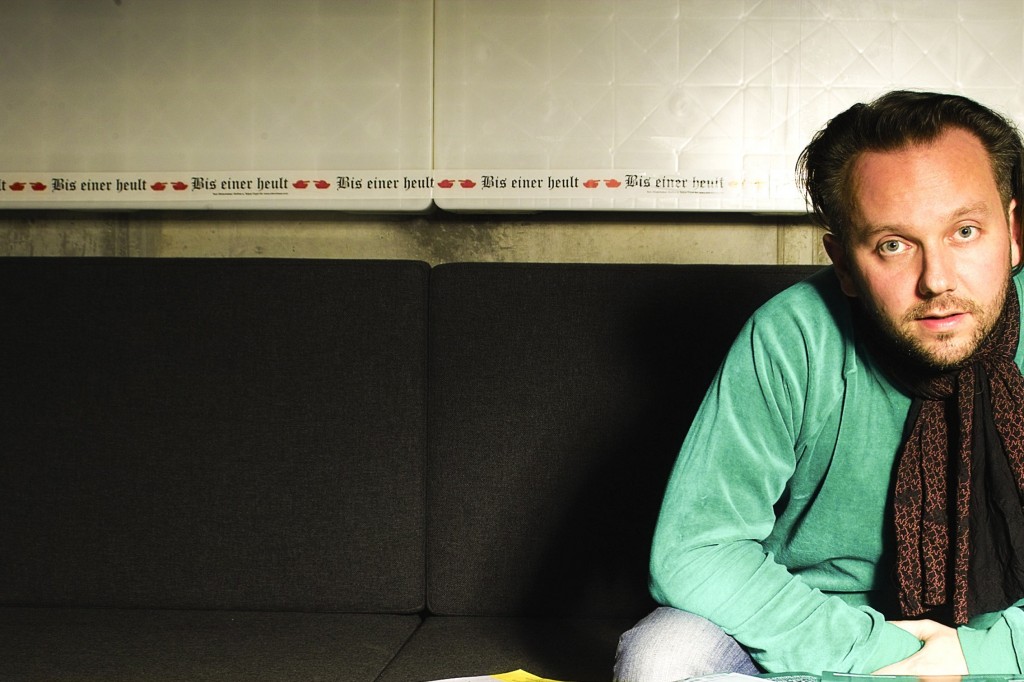
Im Gespräch mit Sebastian Dresel über “Now Is Early” von Nicolette (1992).
Wie bist Du zuerst auf “Now Is Early” gestoßen?
Das war insofern einfach, als dass alles was auf “Shut Up & Dance” kam einfach Pflichtübung war. Aus irgendeinem, mir schlussendlich nicht erklärlichen, aber ausgesprochen glücklichen Umstand, hatten in unserem überschaubaren Mannheim schon Jahre zuvor einige Leute ein sehr feines Gehör für alles entwickelt, was in England so geschah. Interessant für mich ist diesem Zusammenhang aber vor allem auch das “Wo?” . Ich habe damals in der hiesigen WOM-Filiale (für diejenigen die sich nicht erinnern – eine Plattenladenkette namens „World of Music“) am so genannten “Vorspieltresen” gearbeitet. WOM war ein Franchise-Laden, was bedeutete, dass man in der Order deutlich autarker war als reine Filialen einer großen Kette, die teilweise zentral bestückt wurden. Und so war ausgerechnet eine WOM-Filiale mitten in Mannheim einer der am besten sortiertesten Plattenläden, die mir je über den Weg gelaufen sind.
Gregor “DJ. GO.D.” Dietz (der sich u. a. als “Brainstorm” auf R&S Records bemerkbar gemacht hat und mit seinem damaligen Partner auch die famosen TZ 8 und 9 verantwortet) – der, zu meinem immer noch anhaltenden Grauen, vor 4 ½ Jahren verstorbene großartige Freund, Musiker und DJ – hat die “Disco-Abteilung” (die Zusammenfassung der Stilistika in dieser Abteilung ist ein Thema für sich, auf das ich gleich nochmal komme) geleitet und Holger “Groover” Klein (der – das muss man auch unbedingt sagen, schlicht derjenige war, der “Breakbeats” in Deutschland vor jedem anderen gesportet hat) hat ebenfalls da gearbeitet.
Ich stand also am Vorspieltresen und habe den ganzen Tag für alle möglichen Leute ihre Platten aufgelegt. Angesichts der anderen Abteilungen, die durchweg von ziemlichen Freaks bestückt wurden, war das eine wahnsinnige Vielfalt an Input für einen jungen Typen. So wird mir zum Beispiel Nirvanas “Nevermind” immer in erster Linie als eine Platte in Erinnerung sein, die zunächst einmal monatelang weitestgehend unberührt im Regal vergammelte, obwohl sie der zuständige Typ aber auch wirklich jedem aufzudrängen versucht hat. Ich gebe zu, dass ich an meiner Schule auch nicht mit Wissensvorsprung-Überheblichkeit gespart habe. Wollte ja monatelang keiner wissen.
Aber zurück zur Disco-Abteilung, in der dann die erste Stereo MCs oder Silver Bullet zusammen mit diesen ganzen Soul Sachen Marke Levert, zunächst auch dem ganzen Acid-Jazz-Katalog, C&C Music Factory, Archie Bell and the Drells, Mister Fingers, KLF, Chill Records oder Plus 8 und vor allem den ganzen wunderbaren ersten Warp-Records wie etwa Sweet Exorcists „Clonk“ in einer Ecke versammelt standen. Der damalige Manchester-Rave-Zusammenhang war bei Wave einsortiert und ich entsinne mich der Debatten, warum eigentlich. Zumal Holgers Blick auf Breakbeats sicher eher aus einem Zusammenhang entstand, der sich aus The Jam, Orange Juice, Clash und dem Factory Records-Backkatalog samt des ganzen On-U-Universums (den ich eher über die Depeche Mode Mixe und dann vor allem über Gary Clails wunderbaren „Emotional Hooligan“ erschlossen habe) und eben den späteren Manchester Bands speiste und quasi nahtlos daraus erwuchs.
Biz zum heutigen Tage scheint es mir nicht fraglich, warum sämtliche Nitzer Ebbs, Weathermen und Front 242s des Planeten damals eben nicht bei „Disco“ (und damit eben in der Nähe von Techno) einsortiert waren und insofern House, Techno und Breakbeat der Zeit immer auch „räumlich“ in einem Zusammenhang mit Soul und Hip Hop und Jazz standen. Insofern auch nicht verwunderlich, dass so Typen wie Talla später wieder nur Schrott gemacht haben. Irgendwie haben wir hier so eine Hacienda-Sozialisation nachempfunden ohne es genau zu wissen (zumindest ich nicht). Dass Holger dieses „It’s grim up north“ T-Shirt abgegriffen hat, schmerzt mich bis heute. Und wenn ich jetzt den Titel von Peter Hooks Buch lese „How Not To Run A Club“ dann fällt es schwer, das nicht auch auf’s Milk zu beziehen. Eine ausgesprochen wertvolle Erkenntnis übrigens, dieses immer wiederkehrende Phänomen des Dilettantismus.
Aber nochmal zur eigentlichen Frage. Auf „Now Is Early“ zu stoßen war zunächst keine Entscheidung aufgrund der Platte selbst. Ich kannte Nicolette vorher schon weil ich „O si Nene“ als 12“ gekauft hatte und das rauf und runter lief. Die B-Seite war ja zusätzlich mit einem „Strings of Life“ Sample bestückt, was eben auch den damals ja ganz eindeutigen, ja zwangsläufigen Zusammenhang zwischen Detroit und England verdeutlicht. „Waking Up“ war ja auch noch früher und man wollte alleine des Remixes wegen die ganze Platte haben. Mal ganz abgesehen davon, dass „Waking Up“ dann im Milk zu den allabendlichen Putzlicht-Platten zählte. In einer Reihe mit „Loaded“, „Strings Of Life” (Beatless), M1s „Feel The Drums“ oder YBU’s „Soul Magic”. Ziemlich balearisch ging es da zu. Auch wenn ich dieses Wort damals sicher nicht verwandt habe.
Warum hast Du Dir dieses Album ausgesucht? Was macht es so wichtig für Dich?
Zum einen die bis zum heutigen Tage immer noch nicht annähernd ausgelotete Frage, wie aus dem „Dance“-Zusammenhang (oder wie man es auch immer nennen will) auch wieder der klassische „Song“ erwachsen kann. Also eine Art Rückwärtsbewegung im Disco-Historien-Sinne. „Now Is Early“ ist eine Signature-Platte einer Zeit, die ich für mich als irre prägend wahrgenommen habe. Es wäre schlicht verlogen zu behaupten, dass sie mir damals als so besonders aufgefallen sei, wie ich sie heute einschätze. Ich empfand das auf gewisse Weise als normal, mit Ansätzen konfrontiert zu werden, die mir unbekannt waren, mich begeistert, aufgeregt aber auch gefordert haben.
Vielleicht habe ich sie auch genau aus diesem Grund ausgesucht. Weil sie für Stilprägung steht und gleichzeitig immer solitär geblieben ist. Aufregend ist sie auch heute noch. Als Mike Skinner auf „Original Pirate Material“ bzw. auf „Sharp Darts“ fragte „’ave you ever ’eard a beat like this?“ habe ich mich schon denken hören: „yeah, mate! I ’ave. Kind of.“ Als ich über die Auswahl nachgedacht habe, habe ich mit meinem besten Kumpel King Kummi of D*ruffalo Fame auch über „Road To Nowhere“ von den Young Disciples gesprochen. Eine echt schwierige Entscheidung, weil „Road To Nowhere“ so unfassbar toll ist. Aber „Now is Early“ verbildlicht eben auch vieles, was mir Techno jemals bedeutet hat. Von ihr gehen so viele Pfade aus, dass ich sie kaum zusammenfassen kann.
Die Assoziationsketten reichen von King Tubby bis zu Grant Green auf Blue Note, den ich etwa zur selben Zeit für mich entdeckt habe. Auch die für mich absolut glasklare Logik hinter der Verbindung zu Two-Tone und so etwas erscheint mir weniger über Umweg meiner wunderbaren Vespa, als über eine tiefer liegende Ästhetik zu funktionieren. Ich würde das nicht Mod nennen, aber den Begriff im Sinne seiner modernistischen Bedeutung muss man schon mal fallen lassen. Wenngleich sicher weniger im Sinne besonderer modisch-zeitloser Vorlieben dieser Tage.
Aber es erscheint mir heute schon irgendwie stimmig, dass ich meine musikalische Identität damals irgendwie als Daisy-Age-Raver-Pop-Scooter-Boy gesehen habe. Aber damals war ich schwer zerrissen, weil ich vermutlich lieber irgendetwas von all dem richtig gewesen wäre. Was aber auch irgendwie nicht ging. Man hat eben auf dem Weg ins Milk Toots & The Maytals gehört und auf dem Rückweg Inner City. Read the rest of this entry »
Posted: October 30th, 2009 | Author: Finn | Filed under: Artikel | Tags: de:bug, Interview, Musik hören mit, Tama Sumo | 1 Comment »

Lowtec – Angstrom (Polyfon) 2009
Das ist neueren Datums. Redaktionshit.
So viel zum Thema trippig. Könnte ich dafür schon anwenden den Begriff.
Ist das eine Platte über die Du im Plattenladen nachdenken würdest?
Wahrscheinlich ja. Möchte sie aber noch ein bisschen länger hören.
Bist du jemand der Platten im Laden etwas länger hört?
Ich höre gerne ein bisschen länger, weil ich ansonsten gerne mal etwas nicht entdecke, und dann denke „das ist es nicht“. Aber dann merke ich, dass sich das entfaltet, wenn man ein bisschen länger reinhört. Umgekehrt ist es mir auch schon mal passiert, dass ich ganz schnell reingehört hab und mich zuhause frage, was ich da mitgenommen habe. Das hier mag ich von der Stimmung ganz gern. Die hat schon ein bisschen was Düsteres, aber gleichzeitig auch was ganz Entspanntes, wo man sich reinlegen und dahin fließen kann.
Ein Soundtrack-Feeling?
Ja, auf jeden Fall. Da kann man schon mal ein bisschen wackeln, das könnte ich mir für ein Anfangsset super schön vorstellen. Zum Reinkommen.
Das ist die neue Lowtec.
Jetzt wo du es sagst finde ich es gar nicht so abwegig. War jetzt überhaupt nicht der Erste, der mir einfiel, aber doch schön.
Terre Thaemlitz – Hush Now (DJ Sprinkles Broken Record Mix) (Public Record) 2006
Alt?
Ulkigerweise nicht. Das ganze Knacken gehört konzeptuell dazu und ist ganz schön übertrieben. Also wir haben hier Jemanden, der schon ein sehr komplexes Verhältnis zur Clubkultur hat.
Obwohl ich sagen muss, dass ich die Knackgeräusche im Moment dezenter angenehmer finden würde. Also es nervt mich gerade. Am Anfang dachte ich noch: „Oh, da bin ich wirklich voll reingefallen, dachte halt es ist ein altes Stück.“ Das ist mir zu inflationär eingesetzt. So ein bisschen ab und zu hätte ganz viel Charme haben können. Aber so ist es: „Guck mal, ich hab eine lustige Idee.“
Der Mixtitel ist „Broken Record Mix“.
Das ist mir jetzt gerade zu gewollt.
Und wie findest du die Musik ansonsten?
Die könnte hübsch sein. Ich höre ich mir aber lieber eine alte Platte an mit ein bisschen Knistern. Und ich finde das Vocal-Sample total blöd, ist so ein bisschen cooles „Hey Hey Hey“. Es kommt auch zu oft.
Das ist Terre Thaemlitz als DJ Sprinkles.
Das find ich erstaunlich, weil ich den eigentlich toll finde. Die Idee an sich wäre nicht schlecht, aber es ist mir überall zuviel Gewürz drin.
Aber es geht schon in die Richtung von „Midtown 120 Blues“.
Ich würde das Sample rausnehmen und das Knistern reduzieren. Dann wäre es echt super. Hat eine schöne Stimmung und einen tollen Oldschool-Charakter.
Die Art von Bassline benutzt er gerne, erinnert an „Nude Photo“ von Derrick May.
Das finde ich ja ganz toll. Ah, jetzt wird es auch mit dem Knistern weniger. Vielleicht gibt es das auch als „nur leicht angestaubte Platte“-Mix.
Das ist nur als MP3-File erschienen.
Ohne Sample und mit weniger Knistern wäre es der Hit. Aber es gibt tatsächlich andere Tracks von ihm mit ähnlichen Basslines. Wirklich schade, weil ich den sonst ganz grandios finde.
Aber es ist eigentlich eine sehr konsequente Haltung, etwas so Schönes zu verhunzen. Vielleicht bringt er es ja noch ohne Knacken heraus.
Konsequente Haltung ist natürlich ein Argument, aber ich frag mich immer, was eine konsequente Haltung nützt, wenn es mich nervt. Und ich finde das so schade, weil das ohne das Knacken garantiert eine Platte wäre, die ich kaufen würde. Read the rest of this entry »
Posted: October 26th, 2009 | Author: Finn | Filed under: Artikel | Tags: Hendrik Lakeberg, Interview, New Order, Rewind, sounds-like-me.com | No Comments »
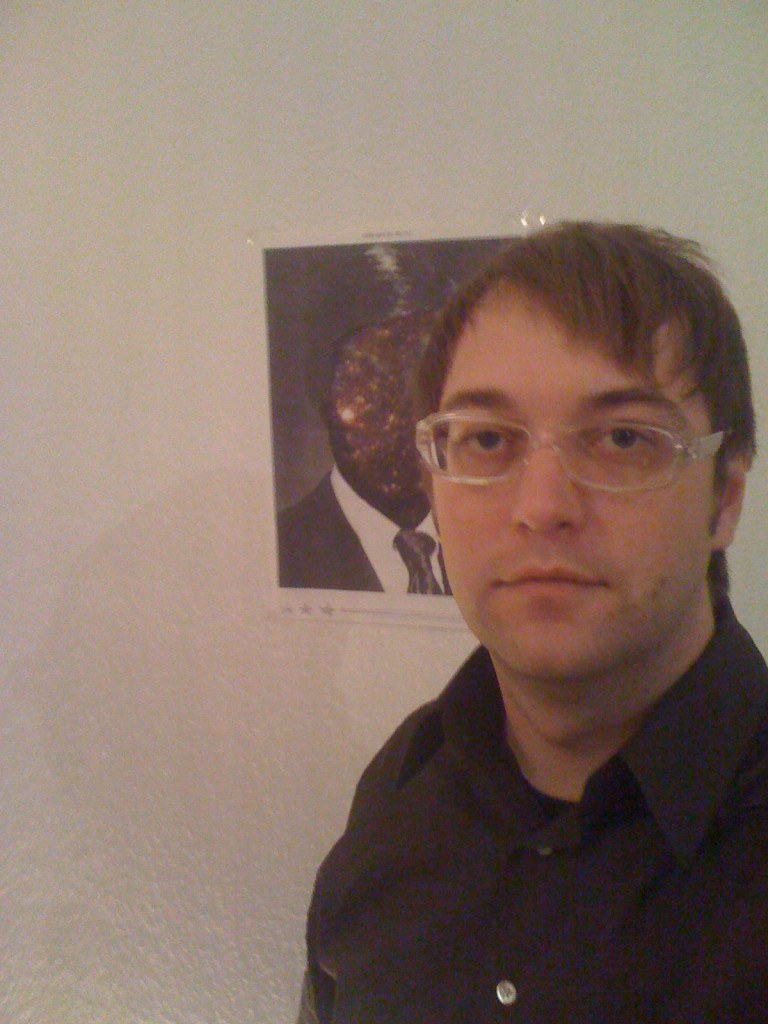
Im Gespräch mit Hendrik Lakeberg über „True Faith“ von New Order (1987).
Wie bist Du auf „True Faith“ gekommen? Was war der erste Zusammenstoß mit dem Stück?
Ich bin ja gerade auf dieses Stück gekommen, weil das Stück mich eben nicht schon seit Jahrzehnten bewegt. Es war eher eine Intuition. Mir ist der Moment eingefallen, als ich das zum ersten Mal gehört habe, und der illustriert ganz gut warum ich es ausgewählt habe. Ich war ungefähr 20 und kannte das Stück nicht von der Zeit als es herausgekommen ist, da war ich 9 Jahre oder so und hatte es zu dem Zeitpunkt also nicht gekauft. Ich habe es im Radio gehört und mochte es, wusste aber nicht, wer das war. Dann war ein Tag, wo ich die Straße lang gelaufen bin, und dieses Stück als Ohrwurm im Kopf hatte, und es kam genau in dem Moment aus irgendeinem Auto, ich glaube es war sogar ein Cabrio, das an der Ampel stand. Das war seltsam, und es war das erste Mal, dass ich es ganz bewusst gehört habe. Und ich habe gedacht, dass ich herausfinden muss, was das für ein Stück ist und habe mich darum gekümmert. Und seitdem ist es immer wieder eins meiner Lieblingslieder gewesen. Es gab es eine Zeit, da habe ich es gar nicht gehört, dann wieder, dann habe ich Platte mal verloren und wieder gekauft. Das Stück hat mich irgendwie begleitet.
Und das immer noch?
Ja, jetzt gerade nämlich wieder. Ich weiß nicht genau warum, aber es hat wieder mit dieser Intuition zu tun. Ich glaube, dass Pop bzw. Musikhören ganz viel damit zu tun hat. Nicht mit einer bewussten Entscheidung, sondern mit dem Empfinden, dass dir irgendetwas an einem Stück gefällt, und du weißt gar nicht warum. Es ist wie etwas Vorbewusstes. Das Stück hat textlich ganz viel damit zu tun, das etwas zu Ende geht und etwas Neues anfängt. Vielleicht liegt es daran, aber ich kann es Dir nicht sagen. Es ist nur so ein Gefühl. Read the rest of this entry »
Posted: October 19th, 2009 | Author: Finn | Filed under: Features | Tags: Alan D. Oldham, Interview, Lenny White, Rewind, sounds-like-me.com | No Comments »
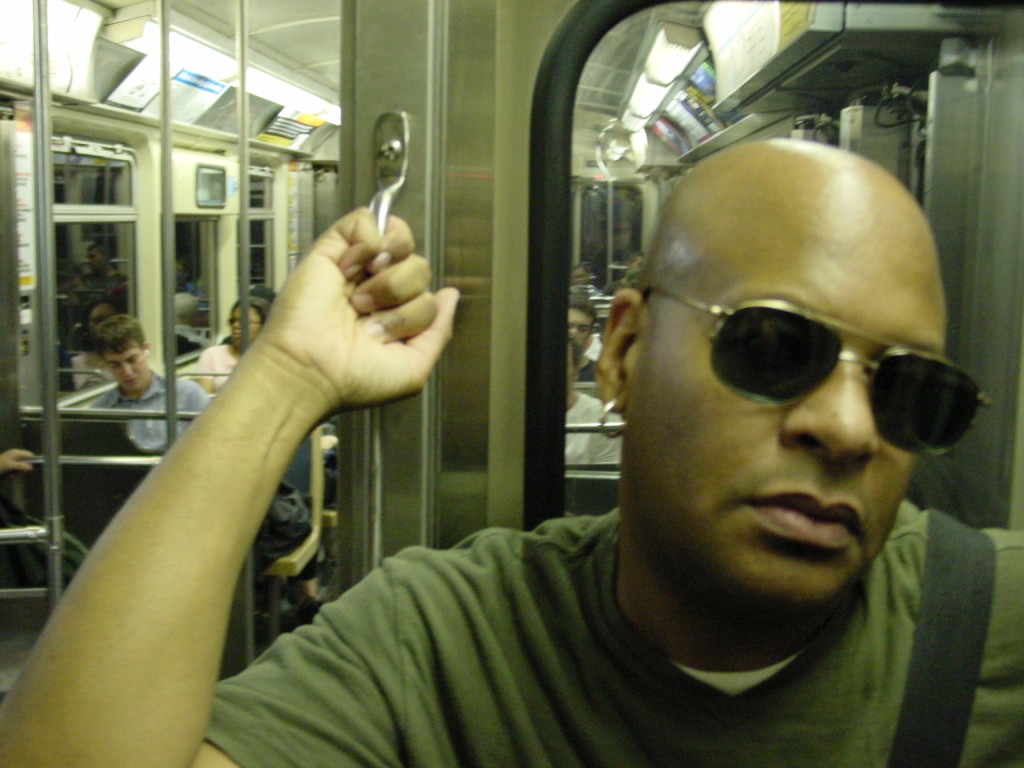
In discussion with Alan D. Oldham on “Presents The Adventures Of The Astral Pirates” by Lenny White (1978).
When and how was your first encounter with “Astral Pirates”?
My late grandmother used to work at Wayne County Community College in the ’70s in Detroit and was friends with the music reviewer for the school newspaper. When she finished reviewing a record or didn’t want it anymore, she gave it to my grandmother and she gave it to me. I was in my early teens. I got a few albums that way. This was 1978.
Why did you choose this album of all his works? What makes it so
important for you?
I didn’t choose it, it chose me! It was one of the records that my grandmother gave me. There was a stack of them. Queen “Jazz,” A Jan Hammer album. Stuff that was on Elektra in those days. But this one stood out for me because of the Mike Kaluta painted cover, the comic-book element and sci-fi concept. Read the rest of this entry »
Posted: October 12th, 2009 | Author: Finn | Filed under: Artikel | Tags: Dr. Buzzard’s Original Savannah Band, Interview, Rewind, sounds-like-me.com, Thomas Meinecke | No Comments »
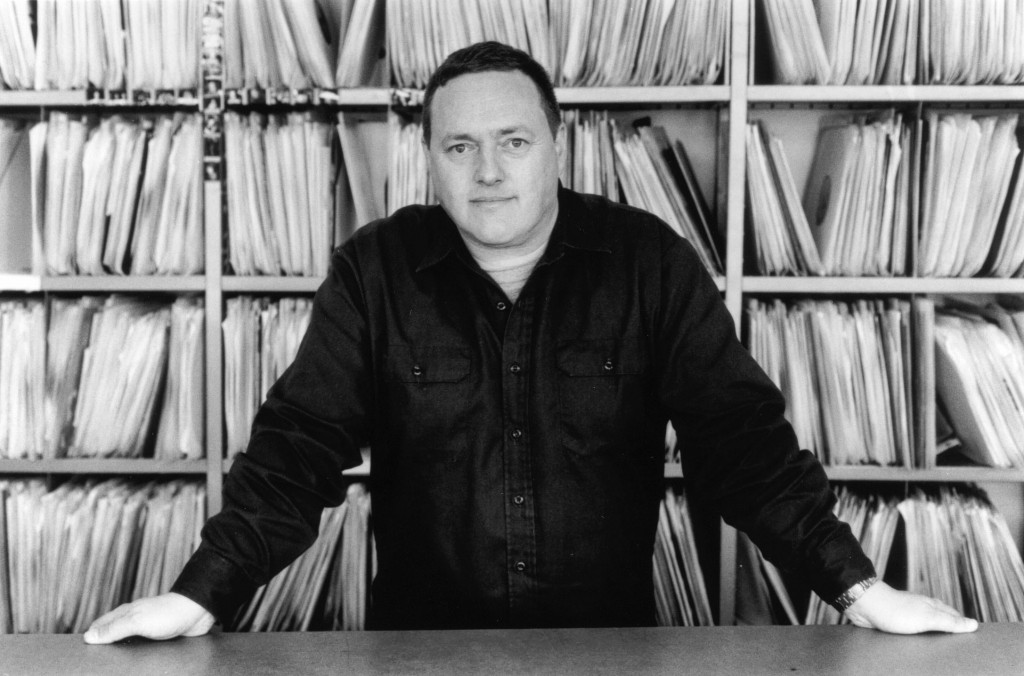
Im Gespräch mit Thomas Meinecke über “Dr. Buzzard’s Original Savannah Band” von Dr. Buzzard’s Original Savannah Band (1976).
Beginnen wir mit einer simplen Frage. Wie bist Du auf Dr. Buzzard’s Original Savannah Band gekommen?
Den Namen habe ich zuerst in Andy Warhols Magazin Interview gelesen, ich würde mal tippen so 1977 oder 78. Da gab es damals eine sehr gute Musikkolumne von Glenn O’Brien, und Interview war in den Zeiten, als es noch nicht so richtig losgegangen war mit dem Hedonismus in der Subkultur, ein Zentralorgan. Man konnte sich sowohl über P-Funk informieren als auch über frühe Ausformungen von New Wave, Pere Ubu, Richard Hell, Blondie usw. Diese ganze Szene wurde natürlich sofort quasi vor der Haustür chronistenmäßig mitgeschrieben. Hier in Deutschland war von der Informationsseite in Sachen interessanter Rock, Pop, Soul und sonst welche Musik nicht viel geboten. Es gab damals die Zeitschrift Sounds, dort glänzte dann manchmal Ingeborg Schober mit einem Artikel über Kevin Ayers oder Roxy Music-Ableger, oder La Düsseldorf und Neu!, es war noch die Zeit bevor Leute wie Diedrich Diederichsen dort geschrieben haben, oder Hans Keller, die das Andere dann auch aufgegriffen haben. Wenn man aber ein bisschen mehr wissen wollte, fand ich es echt schwierig, und ich bin sowieso Warholianer und fand in Interview eine schöne Quelle. Und da wurde dann im Zusammenhang mit ganz anderen merkwürdigen Musikformen, ich glaube es war tatsächlich gerade etwas mit P-Funk geschehen, Dr. Buzzard erwähnt. Und wie das dort beschrieben wurde hat bei mir sofort eine Sehnsucht losgetreten. Ich war eben jemand, der auch damals gerne Disco hörte, ich hörte aber auch gerne Punk und mochte das Gebrochene in Disco. Ich fand den Camp-Aspekt, den man als Leser von Andy Warhols Interview sowieso beherrschte oder erkennen konnte, an Popmusik immer sehr reizvoll. Das Zitathafte, das Vorformulierte. Und es schien mir in der Beschreibung dessen, was diese Band machen würde, als wäre das so eine Art afroamerikanische Ausgabe von Roxy Music. Eine dandyeske, hedonistische Formation, die über das, was man von anderen, sehr eleganten Formationen wie Chic kannte, hinausging. Und so war es dann auch. Ich habe mich auf die Suche gemacht, man konnte über Import die Sachen schon irgendwie erwischen, und da kam dann gerade das zweite Album „Meets King Pennett“ raus als ich das las. Das habe ich mir gekauft und dann das erste gleich danach, was ja schon 1976 erschienen war. Und 79 kam dann ja gleich noch „Goes To Washington“ raus. Das sind die drei ganz großen Alben dieser Band. Es gab später noch ein etwas verunglücktes, wo auch die Besetzung nicht mehr dieselbe war. Und es gab natürlich eine ganz große Folgegeschichte ins etwas leichter Verständliche, mit Kid Creole & The Coconuts, den Coconuts und Coati Mundi usw. Diese ganze New York-Paris-Achse auf dem ZE-Label, wo es dann rüberging bis zu James Chance, der dann plötzlich bei den Aural Exciters mitspielte. Und plötzlich mischte sich das, was man Post Punk nannte, mit Disco, was ja heute ganz modisch und modern ist, diese ganze Post Punk/Disco-Connection. Und das Ganze kündigte sich mit Dr. Buzzard schon an.
Wenn Du damals über Interview davon erfahren hast, ist das ja schon ein Erstkontakt, der kontextuell vorbelastet ist. Konnte die Musik denn einlösen, was Du Dir davon erhofft hattest?
Ja, es hat es total eingelöst und ist sogar noch darüber hinausgegangen. Ich fand es, um mal den etwas merkwürdigen Begriff von Ornette Coleman auszuleihen, „harmolodisch“. Ich hatte das Gefühl hier ist eine musikalische Theorie am Start, die ich gar nicht in Worte fassen kann, aber der ich völlig fasziniert lausche. Und nicht nur lausche, zu der konnte man ja auch ganz toll tanzen. Es hörte sich an wie wenn man zwei Radiosender gleichzeitig hört. Die Anleihen bei leicht verständlicher Musik wie Swing, was ja die Camp- (schwule) Subkultur schon seit Jahrzehnten vorgemacht hatte, wie man spießige Elemente wie Glenn Miller gegen den Strich lesen konnte zu einem Soundtrack der Dissidenz, der sexuellen insbesondere, die ja auch immer eine politische war. Es war ja damals sowieso gang und gäbe, dass Disco sehr zickige und spießige Swing-Elemente rekontextualisierte, resignifizierte, völlig neu ins Feld führte. Aber hier ging es noch darüber hinaus, hier war es tonal sowas von komplex und schwierig. Versuch mal so eine Melodie nachzusingen, die diese unglaubliche Sängerin Cory Daye da immer zu singen hat bei denen, das ist unglaublich komplex und wurde später bei Kid Creole auch runtergerechnet auf einfachere, und dann vielleicht auch massentauglichere Formeln. Ich erinnere das so, dass mich das echt umgehauen hat. Ich fand den Sound der Bassdrum unglaublich. Den habe ich eigentlich erst wieder bei Theo Parrish gehört. Eine große, runde, weiche, unverhältnismäßig laut abgemischte Bassdrum, die dann sogar in Stücken wirkt, die gar nicht Disco sind, so wie bei „Sunshower“, das vor kurzem von M.I.A. noch mal als Sample auf die Tanzfläche geführt wurde. Unglaubliche Sounds, unglaublich viel Arbeit. Ich habe irgendwo mal gelesen, 600 Stunden waren sie im Studio fürs erste Album und haben dann wohl trotzdem von der Plattenfirma kein weiteres Backing erfahren. Sie haben gesehen, „Ah, die Platte steht ja schon in den Läden!“, und hatten davon noch gar nichts gewusst. Aber sie wirkt so, wenn man sie sich anhört, von einer solchen Elaboriertheit und Sophistication, wie man es selten bei Plattenproduktionen hat. Read the rest of this entry »
Posted: October 5th, 2009 | Author: Finn | Filed under: Features | Tags: D*Note, Damir Ivic, Interview, Rewind, sounds-like-me.com | No Comments »
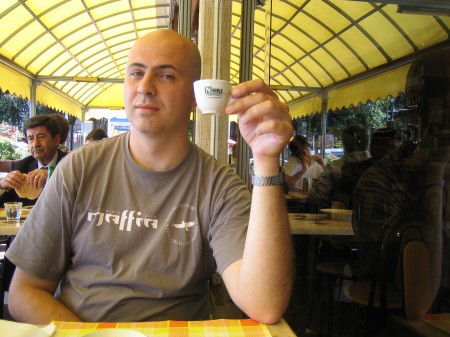
In discussion with Damir Ivic on “Criminal Justice” by D*Note (1995).
D*Note was quite an active project. What made you choose this album out of their varied back catalogue?
Varied, and not always excellent. “Babel”, Matt’s first effort as an album, was excellent, but still naive in some sounds. Breakbeats, for instance – they were quite standard and not so creative, original and classy as they are on “Criminal Justice”, and generally speaking the arrangements were quite keen to the jazzy hip-hop flavour of that era. Later, only some parts of “Fuchsia Dog” matched the unbelievable quality of the first two albums. The rest of the D*Note catalogue is… I wouldn’t say disappointing but… yes, maybe I’m sayin’ it!
On his Myspace page, D*Note’s mastermind Matt Wienevski describes his music as a “cross between Ravel, Miles Davis and Photek”. However high this self-explanation aims, would you agree to some extent?
It’s 100% correct, I think. Plus, there’s room for Michael Nyman. If “Birth Of Cool” was carrying interferences made by Photek and Nyman (and maybe Ravel, ok), we’d have had “Criminal Justice” decades ago. Hey, I perfectly realize that these words sound TOO big. But please, listen to the album… Read the rest of this entry »
Posted: September 28th, 2009 | Author: Finn | Filed under: Features | Tags: A Certain Ratio, Bill Brewster, Interview, Rewind, sounds-like-me.com | 1 Comment »
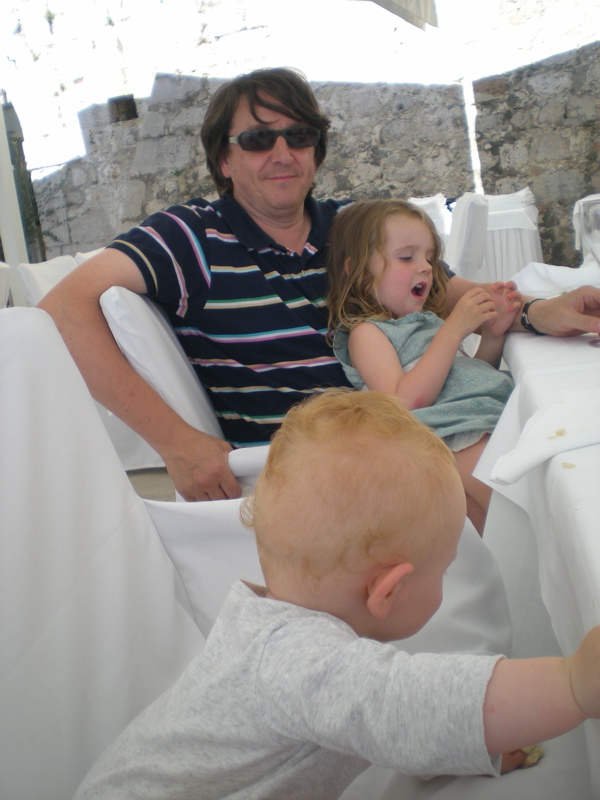
In discussion with Bill Brewster on “Sextet” by A Certain Ratio (1982).
What is your personal history with this particular album? How and when was your first encounter with it?
I bought it the week it came out. I had just moved back to Grimsby (my hometown) after working in London and Switzerland as a chef for five years. I didn’t know what I wanted to do with my life but I knew I didn’t want to spend the rest of it sweating in a kitchen. I’d met some new people who were trying to do cool stuff with music. We’d all been punks in 1976 and 1977 but got bored of how musically limited it all was. We were searching for something new. We had a musical mentor, a guy who ran a musical instrument shop with a few boxes of records in the back, called Roy Bainton. He was 15 years older than us and knew loads about music, everything from Mike Westbrook and Carla Bley to Graham Central Station and, in particular, the blues. We were listening to all this brilliant old stuff that was new to us and also discovering bands like A Certain Ratio and 23 Skidoo who, like us, were also groping towards something different. We were in the process of forming a band when this album came out.
What made you decide for „Sextet“ instead of other of their albums?
They toured to promote this album and we went to see them at this bizarre wine bar in Leeds. I went with all the guys who were in my band. The venue was brightly lit, chrome-plated, horrible. And it was nearly empty, but they didn’t give a fuck: they were astonishing, really tight (helped somewhat by Donald Johnson’s prowess behind the traps). I suppose what “„Sextet“” represents to me is a crossroads of where I had arrived and where they were headed; a sort of Robert Johnson involving trams, drizzle and Northern misery. What is interesting about „Sextet“, listening back now, is that they’d reached a certain competence on their instruments but they still had a thirst for wayward and interesting song ideas and arrangements. Later on, when they were recording stuff like “Don’t You Worry Bout A Thing”, they ended up sounding like those pale Britfunk imitations of the real deal, whereas what makes „Sextet“ endearing is that they sound like nothing and no-one else. The world they inhabited then, it seemed to me, was hermetically sealed from outside influences. I imagined them living together in a big house in Whalley Range, a bit like the Monkees, except with acid and analogue instruments. Read the rest of this entry »
Posted: September 25th, 2009 | Author: Finn | Filed under: Features | Tags: Interview, Playing Favourites, Resident Advisor, Traxx | No Comments »

The Residents – Diskomo (1980)
I discovered this track in one of your live sets, and I was really surprised by it. How did you get to this?
I actually heard this being played by Ron Hardy at the Music Box.
Ah, so it was Ron Hardy who inspired you then?
The people that have inspired me musically where I am now is Ron Hardy, Larry Levan, Larry Heard and fortunately but unfortunately Ian Curtis and Kurt Cobain. Those are pretty much some of my strongest influences. Later on it became people like Farley Jack Master Funk when he was really bringing it to the table musically on the radio, and from that point on it’s like my whole world expanded, it expanded to unparalleled paradox.
In regards of “Diskomo,” though, when I heard Ron Hardy play it, it didn’t make sense to me because I wasn’t on drugs. But a lot of people that were in the party scene at that time were experimenting with drugs. Ron would spin records faster, because he was under the influence. So the thing is I probably heard “Diskomo” at a faster speed. You never knew what Ron was doing at this time, so when you hear “Diskomo” and you hear these sort of patterns and tone pads and kind of modular effects like wind and stuff in this manner, it was hard to tell what was what. If you were in that time period, would you think that was Ron Hardy, or would you think that was a record?
It has a really eerie atmosphere…
It’s the same thing with Ian Curtis, and what Joy Division did. The producer behind them gave that whole thing atmosphere, that sort of specialness. And that’s what “Discomo” did for me when I heard it.
This new wave post punk music is not necessarily something you would associate with early house, which is kind of peculiar, but you seem to be attracted to this kind of music…
This is house music. That’s the thing that nobody—and let’s make this clear, I am nobody to tell you what is and what isn’t the truth—but I can tell you what I know and what I saw. And it was the innovation that Larry and Ron undertook, and it’s the innovation that I have personally taken on myself. I am singlehandedly the ambassador of truth right now. I feel like I have singlehandedly taken on the roles of these artists in the way that they described their music and the way that they played their music, and I feel that I’m someone that can say that this music that has somehow been forgotten has a greater significance than people can imagine.
New Order – Video 5-8-6 (1982)
Let’s talk about New Order. This has a kind of long-jam approach to recording, but it is also kind of a blueprint, not only for later electronic developments, but also for their own developments. There are already shadings of “Blue Monday” in it, but it is much earlier, 1982.
I play “Video 586” in my sessions. I play every type of sound known, and I am probably the world’s biggest risk taker. There are probably three other people that I could say right now that are as risky as I am.
Who are they?
Mick Wills, from Stuttgart, Germany, James T. Cotton and myself. And, actually, someone who is on another level to also give full etiquette and education and experience is Jamal Moss. In my eyes, even though he doesn’t DJ, musically what he does with IBM and these other projects… it’s not the sort of stuff that you would usually hear.
But he does DJ, doesn’t he?
Jamal is one of my guys, and I have never seen him play wax. But what I have of him, the material that I have gotten from him, is still sick. It’s like another level of Ron Hardy through Jamal Moss. Without a doubt.
You seem to be quite like-minded in your approach…
Well, “Video 586” is an idea that I didn’t realize that was important until later, Jamal didn’t realize until later, that JTC didn’t realize was important later. It’s the idea of not following the law of 4/4 music, or the law of what it should be. This is what made music risky, and this is what made New Order risky.
Why do so few DJ’s take risks that way do you think?
Because they are scared. They’re scared to lose the crowd, they are scared to be risky, to do something that they have never done. That’s why you have something called the social chain, and it’s what everybody else follows. I am not on the social chain. Those people that I have mentioned, Mick Wills, James T. Cotton, Jamal are guys that I know do not play by the rules.
So is that your main agenda? To change the set of rules?
My main agenda is to change the rules to the way that they should be. The way that everybody is crying, “Why can’t it be like the days when I was growing up.” Because this is the point, think about it: Why do people play records from the old days? Because they wanna remember. Why do you always have to remember the past? Why can’t you deal with now? Read the rest of this entry »
Posted: September 23rd, 2009 | Author: Finn | Filed under: Features | Tags: Interview, Philip Sherburne, Rewind, sounds-like-me.com, Thomas Dolby | No Comments »

In discussion with Philip Sherburne about “The Flat Earth” by Thomas Dolby (1984).
Why did you choose this album, and how did you come across Thomas Dolby in the first place?
Until I was 12 or 13, I got most of my pop music from Top 40 radio. There weren’t a lot of other options for kid living in suburban Portland, Oregon in the late ’70s and early ’80s, and I loved a lot of things that I’d probably cringe at now, simply because they were all that was available. This is not one of them, though. Thomas Dolby’s “The Flat Earth” has remained a personal favorite for a quarter century now, and within it I can find many of the seeds of my eventual love for electronic music. I don’t remember any first encounter with Thomas Dolby’s 1982 single “She Blinded Me With Science,” which was all over the radio that year. I’m sure it was the synths and samples that grabbed me. I had discovered synthesizers through the music shop where I bought piano sheet music – Bach, Czerny, Phil Collins – and was nuts about anything with synths in it (In 1983, I’d get one of my own, a Korg Poly-800). Curiously, I didn’t dig any further into Dolby’s music at the time, but then, the song was ubiquitous, and in retrospect, it was such an odd single it probably didn’t gesture towards a form bigger than itself, like an album. It was what it was, and that was plenty. In 1984 or 1985, I went through a brief period of checking out LPs from the Multnomah County Library. That’s where I came across „The Flat Earth“. It was the cover that got me. Around that time, I would latch onto anything that had the faintest hint of “new wave” to it, and the cover’s pseudoscientific markings and cryptic photo-montage seemed like the most modern thing I’d ever seen. In retrospect, the sleeve is hardly so dazzling — a slightly watered down version of Peter Saville. (In fact, it looks a little like a cross between the Durutti Column’s “Circuses & Bread” and Section 25’s “From the Hip”, but it lacks the elegance of either.) Still, it was good enough for a 14-year-old jonesing for the New. I remember sitting on the floor of my parents’ living room, hunched over the sleeve, trying to make sense of the whole package. Not to repeat myself, but “cryptic” is the only word that fits. Everything about the music seemed to hint at hidden meanings, from the sleeve to the lyrics: “Keith talked in alphanumerals,” after all. Who the hell was the guy panning for gold on the cover? Who were these mysterious Mulu, people of the rainforest? What was a drug cathedral, and why an octohedron? (I had so much to learn.) Etc., etc. I’ve long since stopped caring much about lyrics, much less concept albums, but I was young and impressionable then, and every flip of the record seemed to offer another clue as to some strange, grownup world I couldn’t begin to decipher. The same went for the music, of course. For starters, there was the stylistic range: “Dissidents” and “White City” were recognizable as pop music, after a fashion, but what was “Screen Kiss”? It presented a kind of liquidity I don’t remember having recognized in music before that – first in the fretless bass, the synthesizers and the stacked harmonies, and even the chord changes, but mainly it was the way it trailed off into the scratchy patter of L.A. traffic reports, multi-tracked and run through delay. I’d never heard the “real world” breaking into pop music before, and certainly not spun into such a purely “ambient” sound. “Mulu the Rain Forest” was another weird one – again, an approximation of ambient, long before I’d discover it. And “I Scare Myself” totally threw me for a loop. What was a Latin lounge jazz song doing here, especially sandwiched between the humid “Mulu” and the jagged, chromed funk of “Hyperactive”? There was no doubting the continuity of the album, but the pieces felt at odds, as fractured as the cut-up sleeve imagery; the sequencing seemed erratic and the two sides of the LP felt out of balance with each other, and yet you couldn’t have put it together any other way. Just like venturing to the edge of the (flat) earth, flipping the record had a weirdly vertiginous quality to it. (I was, you may note, an unusually impressionable adolescent, at least where music was concerned.)
At the time I got this it took some time to grow on me. Was it the same with you or was it love at first sight?
A little of both. There was definitely something off-putting about the record at first, but I devoured it anyway. I’d go so far as to say that the parts that alienated me were precisely what sent me back into it. I wanted to figure it out. All this might sound a little silly now. Today, I can recognize that a lot of it is pretty overblown, beginning with the lyrics: “My writing/ is an iron fist/ in a glove full of Vaseline”? That’s… pretty awful. (Also, it may go some way towards explaining the purplish quality of my own youthful stabs at poesy.) But for all its excesses, it kept drawing me in. I still listen to the fade out from “Dissidents” into “The Flat Earth” and feel a thrill all over again, all those gangly licks and hard-edged FM tones giving way to hushed percussion and a yielding soundfield… It’s funny, too, to listen today to the title track and even hear the tiniest hint of disco and proto-house in the rolling conga rhythms, things I had absolutely no idea about then. Whatever its failures, this was the album that, more than any other up until that time, convinced me that records offered more than just a hook and a chorus, that they deserved to be puzzled through, analyzed, unpacked. That they offered up their own little worlds, worlds I would aspire to inhabit. Read the rest of this entry »
Posted: September 13th, 2009 | Author: Finn | Filed under: Artikel | Tags: Interview, Maurice Summen, Rewind, sounds-like-me.com, Tuxedomoon | No Comments »

Im Gespräch mit Maurice Summen über “No Tears” von Tuxedomoon (1978).
In meiner frühen Jugend war “No Tears” einer dieser Songs, die in Clubs, in denen alles zwischen Italo Disco und New Wave gespielt wurde, quasi automatisch die Tanzfläche füllten. Bist Du in einem ähnlichen Kontext auf den Song gestoßen? Was ist Deine persönliche Geschichte mit “No Tears”?
Es gab im Münsterland in den 80er Jahren einen schönen Laden namens “Fabrik” in der Kleinstadt Coesfeld. Ein Treffpunkt für Wave, Punk, EBM, Psychobilly und Cure-Fans. Ein fantastischer Ort: Tolle Frisuren, Domestos-Jeans, Ratten auf den Schultern und ein wirklich bizarrer Musikmix. “No Tears” war ähnlich wie “Surfin’ Bird” von den Trashmen eine Art Schnittmengenstück für nahezu alle subkulturellen Lager.
Der Song hat ja diesen sehr charismatischen Text. “No tears for the creatures of the night”. Jeder konnte das für sich auslegen, und so wurde das von der New Wave- bzw. Grufti-Szene bis heute zu Electroclash und Nachfolgendem immer weitergetragen und neu eingesetzt. Aber wie hast Du diesen Text für Dich persönlich ausgelegt? Einsamkeit in der Menge? Entfremdung in der nächtlichen Stadt? Es bieten sich ja viele Deutungsmöglichkeiten…
Meine Eltern haben damals eine schwere Beziehungskrise durchlebt, Schule habe ich nicht bzw. hat mich nicht verstanden, Mädchen waren für mich auch ein großes Mysterium. Sie hingen mit den etwas älteren Dorfprolls herum, nur weil die schon ein Auto hatten! Na ja, so in etwa habe ich mir das damals in zusammengereimt… Ich war folgerichtig gegen alles! Die „Creatures“ waren eben all “die anderen”! Und für die hatte ich einfach kein Mitleid! Read the rest of this entry »










Recent Comments